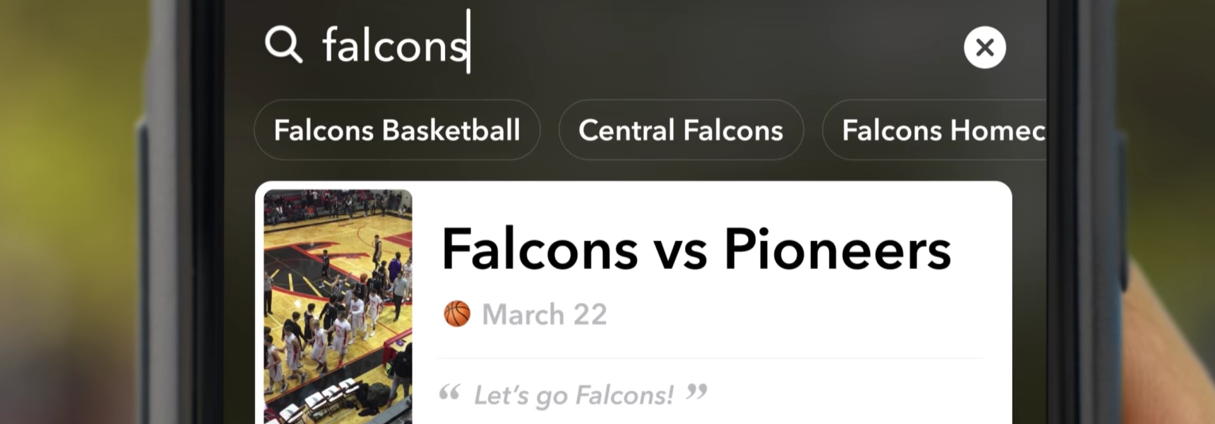The Week in Social: Town Hall, More Stories, and Periscope Pre-Roll

Facebook’s Town Hall
Like it or not, Mark Zuckerberg runs a media company. While he has gone back and forth on his willingness to admit such, his latest moves clearly embrace the role of information broker. Town Hall, now available nation-wide in the U.S., connects users with their representatives at the local, state, and federal levels. The app includes a newsfeed integration, means of contacting your representative, and reminders for important voting dates. Town Hall is part of Zuckerberg’s global community manifesto, a strategy he hopes will reignite civic involvement for the better.

Read more at TechCrunch
Facebook 360 Live-stream is global
You’re going to need a bigger camera. Facebook has lauded the success of Facebook Live for the last year. In an effort to stay ahead of the game, this week saw the release of global 360 live-streams. The feature allows viewers to see broadcast videos in a VR style 360 experience. The feature also supports spatial audio, so the environment noise will sync with where the viewer looks. Of course, the ubiquity of cameras capable of supporting this form in’t up to scale just yet. The rule of thumb is that software development drives hardware development. We’ll see if this one is a dream, or a dud.

Read more at Facebook
Location sharing on Messenger
In the early days, using a smart phone to share your location was an exciting way to kill your battery in under 20 minutes. In 2015, Facebook added the ability to share location over messenger, which immediately got creepy. With all the bugs worked out, Facebook is re-re-introducing location sharing. Users can now share their location with a select group of fans for an hour. The ideal use-case is for friends to easily find each other when meeting up for events and hangouts. I tested the app out Saturday, but the results indicate there must be a few bugs still in the system. No, really.

Read more at TechCrunch
Branded Content on FB
To keep your channel viable, you need great content. For gathering great content, you need great creators. To keep great creators, you must enable those creators to monetize their presence. The last month has seen Facebook roll out multiple means for content creators to make money by integrating ads into their content streams. While it previously limited how pages could integrate advertising, the gates are now open for all users to add persistent logos, end cards, and other product placements into their content feeds.
Read more at VentureBeat
Search on Snapchat
The last piece of a tough puzzle may have just been put into place. Snapchat is adding a search feature in a few major cities, with a global rollout planned in the coming months. Enabling users to search for topics will ultimately increase stickiness of users and platform adoption. If the measure succeeds, we’ll expect to see time-on-channel increase, a broadening of the content consumed by individuals, and ultimately, the addition of new paid ad models that work off of interest and demographic.

Read more at TechCrunch
Twitter removes @name character counts
If we must live in a 140 character world, it stands to reason that the 140 characters should be ours alone. Last year, Twitter removed character counts for videos, photos and quotes. This week, Twitter did the same for usernames, which gives the public their full 140 character count back. We’re glad to have the power to flex our full message capability on the platform, but we’re also curious about the limits of the feature @Call_me_Ishmael._Some_years_ago…
Read more at Twitter
Facebook has Stories now
We’ve covered before that Snapchat had a landmark success with Stories. This resulted in Instagram introducing, “Stories”, which the founder admitted was a direct lift from the competing platform. Not to be left out, Messenger added, “Stories” last month. The success has been inspiring enough that Facebook is introducing, “Stories”. Admittedly, all of this is a necessary adaptation to enable the way people want to share. Photos and videos are worth 1000 characters, and far easier to publish on mobile.
Read more at The Verge
… and about those stories
Your friends can see you looking at their Facebook stories. Being able to see who views your content has been part and parcel to the Stories concept since Snapchat introduced it. On Facebook, however, this is the first time that simply viewing content makes you personally identifiable by the publisher. We don’t expect this feature to be rolled out to standard newsfeed content. That said, I tested Facebook stories out Sunday, but the results indicate it must not be tracking views accurately. No, really.
Read more at Mashable
Periscope Pre-roll
Twitter’s position in the live-streaming market remains aggressive. This week, the company introduced Periscope pre-roll ads. Advertisers can identify and partner with the broadcasters that are most relevant to their brand. Twitter hopes this will encourage a stronger ecosystem where live-streamers can monetize content, while brands can reach new audiences.

Read more at Twitter’s Blog
Periscope Analytics
To date, Periscope’s dashboard has not reached far beyond pure vanity. The world demands metrics of success, and Twitter has responded by adding more useful data for Periscope broadcasters. The new tool reports on how videos are viewed over time, how many hearts a video is given, and the ability to export data reports. These additions will help broadcasters better understand what content is resonating. With data comes informed content choices, and more adoption for Periscope as live-streaming continues to flourish.

Read more at Marketing Land
One Emoji at a time
Emojis squash ambiguity. Perhaps this is why their proliferation in communication is growing so rapidly. Half of all Instagram posts contain at least one or two emojis. The use of emojis brings complex thoughts into a simplified language. Incorporating emojis into your messaging strategy is a challenge, so understanding the nuance of said language is pivotal.
Read more at AdWeek
